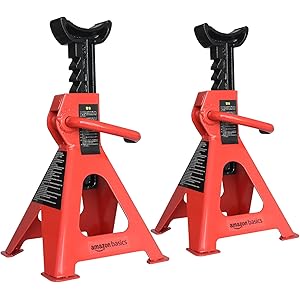When I first considered the idea of living in a trailer home, I was filled with curiosity about how these unique structures are made. The blend of innovation, craftsmanship, and practicality in trailer homes is truly fascinating. In this article, I will take you through the entire process of how trailer homes are made, sharing insights, statistics, and even personal anecdotes along the way. So, buckle up and let’s dive into the world of mobile living!
The Rise of Trailer Homes
Before we delve into the manufacturing process, it’s essential to understand why trailer homes have gained popularity over the years. According to a report by the U.S. Census Bureau, the number of mobile homes has increased significantly, with over 22 million people living in them across the United States as of 2020. This trend is driven by several factors:
- Affordability: Trailer homes offer a cost-effective solution for housing, especially in urban areas where prices are skyrocketing.
- Mobility: The ability to relocate easily makes trailer homes appealing for those who enjoy a nomadic lifestyle.
- Simplicity: Many people are drawn to the minimalist lifestyle that trailer homes promote.
Now that we understand the appeal, let’s look at how these homes are constructed.
The Design Phase
The journey of a trailer home begins with design. This phase involves several steps that ensure the home is both functional and aesthetically pleasing. Here are key components involved in the design phase:
- Blueprint Creation: Architects and designers create detailed blueprints that outline the layout, dimensions, and features of the trailer home.
- Material Selection: Designers choose materials that are lightweight yet durable, ensuring the trailer can withstand transport and climate changes.
- Customization: Buyers often have the option to customize their homes, selecting features like interior finishes, appliances, and layout adjustments.
In my experience, having a say in the design makes the future homeowner feel more connected to their space, which is a crucial aspect of making a house a home.
Manufacturing Process
Once the design is finalized, the manufacturing process begins. This is where the magic happens, and the trailer starts to take shape. The construction of a trailer home usually follows these stages:
1. Frame Construction
The first step in manufacturing is to build the frame. This is typically done using steel or wood, depending on the design requirements. The frame serves as the backbone of the trailer, providing structural integrity. Key points include:
- Steel frames are often used for durability and strength.
- Wood frames are lighter and can be easier to work with.
- The frame includes cross members to support the floor and distribute weight evenly.
2. Installing the Floor
Once the frame is complete, the next step is to install the floor. This is often done with plywood or oriented strand board (OSB), which is then covered with a moisture barrier to protect against water damage. This stage is crucial for ensuring a solid foundation.
3. Wall Construction
Next, the walls are constructed and typically consist of a wooden frame covered with insulation and exterior sheathing. This is where the home starts to look like a house:
- Insulation is added for energy efficiency.
- Exterior sheathing can be made from materials like vinyl or wood.
- Windows and doors are framed in during this process.
4. Roof Installation
The roof is added next, often designed to be aerodynamic to reduce drag when towing. Roof materials vary but typically include:
- Metal roofing for durability.
- Asphalt shingles for cost-effectiveness.
- Rubber roofing for weather resistance.
5. Interior Finishing
With the exterior complete, it’s time to focus on the interior. This phase includes:
- Electrical and plumbing installation.
- Insulation to ensure comfort.
- Interior wall covering, such as drywall or paneling.
- Flooring installation—options include laminate, carpet, or vinyl.
Interior finishing is where personal touches come into play. I remember visiting a friend’s trailer home, and the unique decor made it feel warm and inviting.
Quality Control and Inspections
After the trailer home is constructed, it undergoes rigorous quality control checks. These inspections ensure that all systems (electrical, plumbing, etc.) are functioning correctly and that the home meets safety standards. This process can involve:
- Testing for leaks and structural integrity.
- Ensuring appliances are installed correctly.
- Final walkthroughs to confirm that all features meet the buyer’s specifications.
Transportation to the Site
Once the trailer home has passed all inspections, it is transported to the buyer’s desired location. This involves:
- Securing the trailer to a truck designed to handle the weight and size.
- Ensuring that the trailer is roadworthy and complies with local regulations.
- Planning the route to avoid obstacles and ensure a smooth delivery.
Seeing a trailer home on the road can be quite a sight! It’s a reminder of the mobile lifestyle that so many people cherish.
Setting Up the Trailer Home
After arrival at the destination, the trailer home needs to be set up. This final stage involves:
- Leveling the trailer to ensure stability.
- Connecting utilities such as water, electricity, and sewage.
- Installing skirting to protect the undercarriage from the elements.
Setting up a trailer home can be an exciting moment for new homeowners, marking the beginning of a new chapter in their lives.
Case Studies: Real-Life Experiences
To illustrate the impact of trailer homes, let me share a couple of case studies that highlight their significance in people’s lives.
Case Study 1: The Young Family
A young family of four decided to purchase a trailer home to escape the high costs of renting in their city. They were able to customize their home, adding a playroom for their kids and an outdoor deck. The financial relief allowed them to save for future goals while enjoying a cozy lifestyle.
Case Study 2: The Retiree Couple
A retired couple chose to downsize to a trailer home after their children moved out. They embraced the minimalist lifestyle, traveling across the country. Their trailer became their home base, allowing them to explore new places while keeping their living expenses low.
The Future of Trailer Homes
The future looks bright for trailer homes as more people seek affordable and flexible living solutions. Emerging trends include:
- Eco-friendly materials and construction techniques.
- Smart home technology integration for efficiency and convenience.
- Community living in trailer parks that promote social interactions.
As we move forward, I believe trailer homes will continue to evolve, providing innovative solutions for housing challenges.
Conclusion
In conclusion, the process of making trailer homes is a complex yet fascinating journey that combines design, construction, and personalization. From the initial blueprint to the final setup, every step plays a crucial role in creating a functional and inviting living space. Whether you’re drawn to the affordability, mobility, or simplicity of trailer homes, there’s no denying their growing impact on modern living.
If you’re considering a trailer home or just intrigued by the process, I encourage you to explore further. Share your thoughts below, and let’s discuss your experiences and insights!
FAQ
Q: Are trailer homes safe in severe weather?
A: Yes, when properly anchored and constructed, trailer homes can withstand severe weather conditions. It’s essential to follow local guidelines for securing mobile homes during storms.
Q: Can I customize a trailer home?
A: Absolutely! Many manufacturers offer customization options, allowing you to choose layouts, materials, and finishes that suit your style.
Q: How do I maintain a trailer home?
A: Regular maintenance includes checking for leaks, ensuring appliances are functioning, and inspecting the exterior for wear and tear.
Don’t forget to sign up for our newsletter for more insights and share this article with friends and on social media!
Amazon Basics Steel Jack Auto Stands with 6,000 lb or 3 Ton (2.7 metric Ton) Capacity, 1 Pair, Black and Red
$27.92 (as of November 15, 2025 07:52 GMT -03:00 - More infoProduct prices and availability are accurate as of the date/time indicated and are subject to change. Any price and availability information displayed on [relevant Amazon Site(s), as applicable] at the time of purchase will apply to the purchase of this product.)
Sign up for our newsletter and stay up to date with exclusive news
that can transform your routine!





